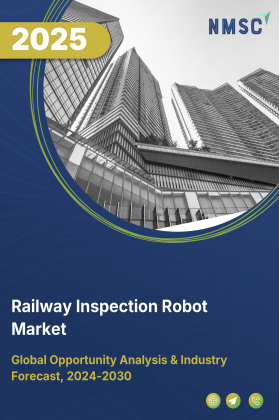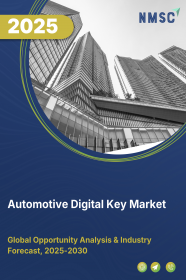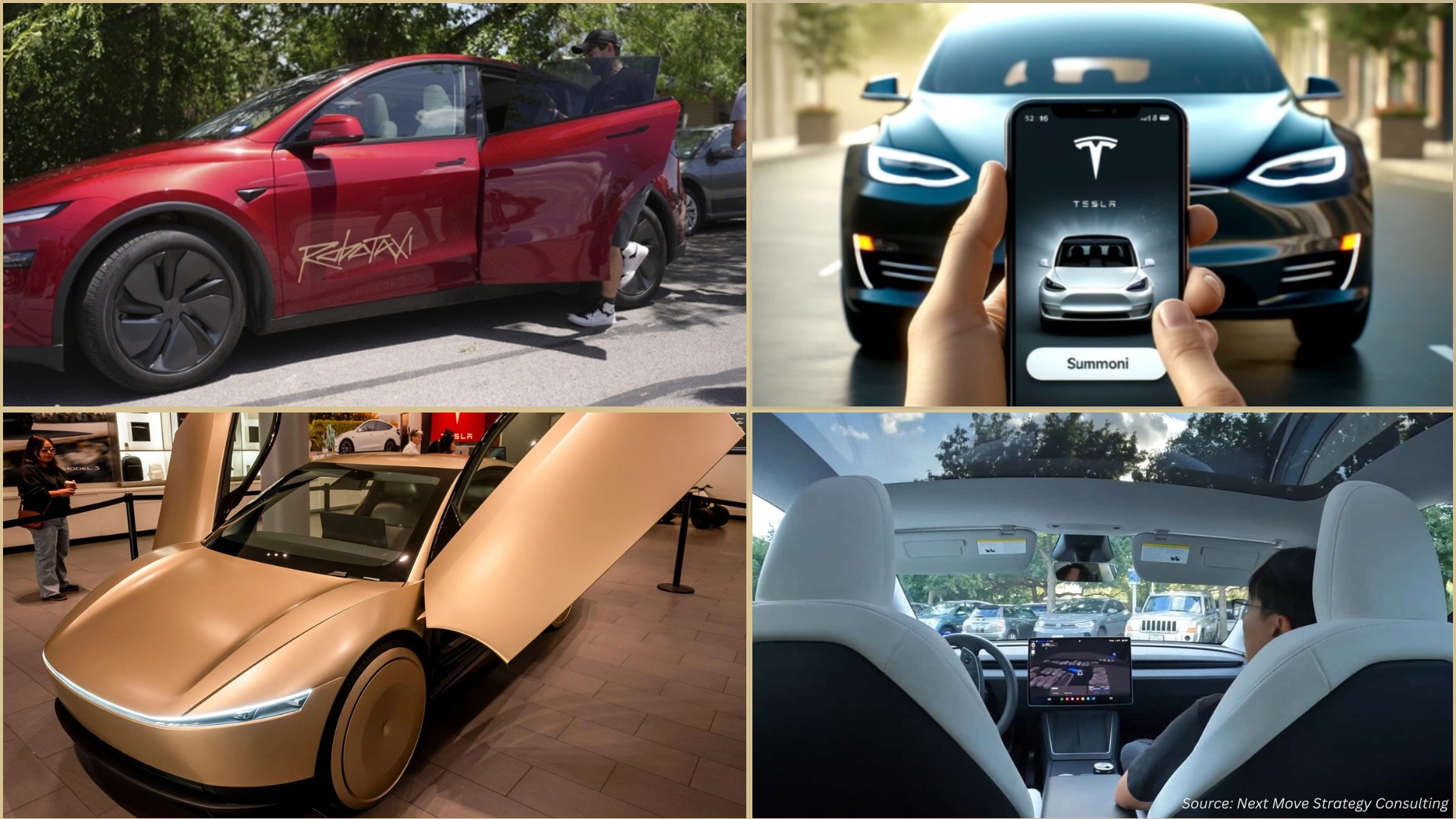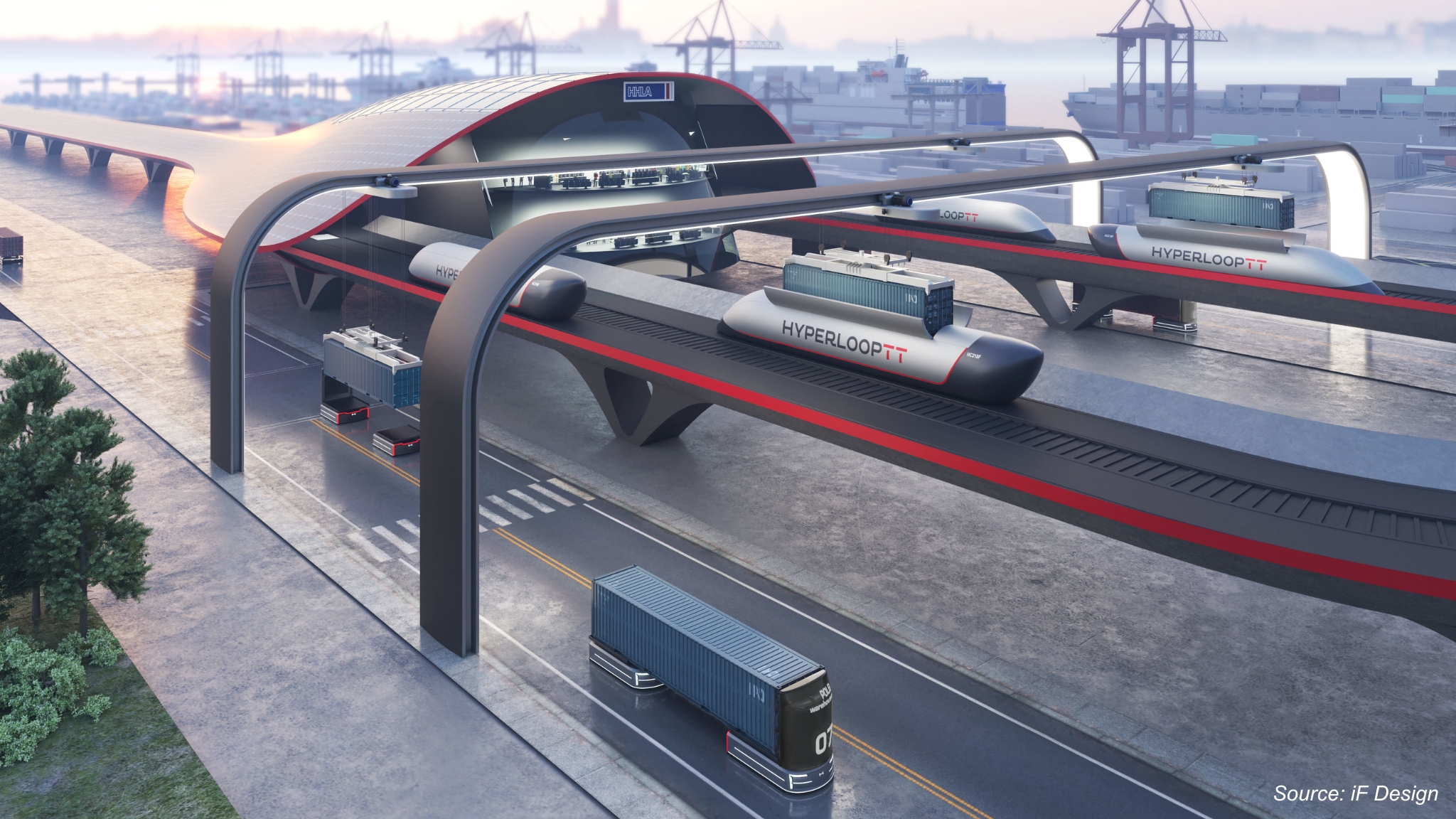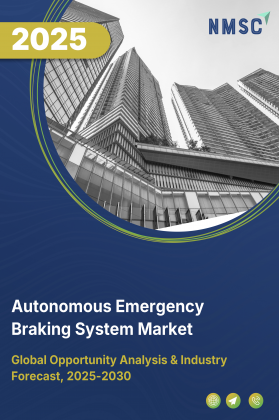
Autonomous Emergency Braking System Market by System (Forward Collision Warning, Low-Speed AEB, High-Speed AEB and Others), by Technology (Radar-Based AEB, Camera-Based AEB, LiDAR-Based AEB and Others), by Vehicle Type (Passenger Vehicles, Commercial Vehicles, Heavy Trucks, Electric Vehicles, Motorcycles), and by End User (OEMs, Aftermarket, Fleet Operators, Others) – Global Opportunity Analysis and Industry Forecast, 2024–2030
Industry Outlook
The global Autonomous Emergency Braking System Market size was valued at USD 61.84 billion in 2024, with an estimation of USD 71.30 billion in 2025 and is predicted to reach USD 145.29 billion by 2030 with a CAGR of 15.3% from 2025-2030. The industry is experiencing strong growth, driven by rising traffic accidents, increasing vehicle ownership, and growing emphasis on automotive safety.
AEB systems automatically apply brakes in critical situations, helping to prevent or reduce collisions and enhance overall vehicle safety. Advancements in radar, LiDAR, and sensor fusion technologies are improving the accuracy and responsiveness of these systems, enabling faster and more reliable braking.
Automakers and technology providers are integrating autonomous emergency braking systems across passenger vehicles, commercial vehicles, and electric vehicles, while ongoing innovation and regulatory support are further accelerating market adoption and establishing AEB as a key feature in modern vehicle safety.
Rising Traffic Accidents Fuel Demand for Autonomous Emergency Braking Systems
The increasing frequency of traffic accidents is a key driver for the autonomous emergency braking system market demand. AEB systems automatically apply brakes in critical situations, helping to prevent or reduce the severity of collisions and enhancing overall vehicle safety.
Growing consumer awareness and the automotive industry’s focus on advanced safety technologies are accelerating the adoption of AEB systems in new vehicle models. According to the latest data from the Centers for Disease Control and Prevention, approximately 1.19 million people die in road accidents globally each year, underscoring the vital role of AEB systems in improving road safety and reducing collision-related fatalities.
Growing Vehicle Adoption Intensifies Demand for AEB Systems
The surge in vehicle ownership is significantly increasing traffic density, which in turn elevates the risk of accidents during lane changes, and sudden braking. This rising accident risk is accelerating the demand for autonomous emergency braking systems that automatically apply brakes in critical situations to prevent or minimize collisions.
According to the International Energy Agency, global electric car sales surpassed 17 million units in 2024, an increase of over 25% compared to the previous year. Notably, the additional 3.5 million electric cars sold in 2024 alone exceeded the total electric car sales recorded in 2020, highlighting the rapidly expanding vehicle fleet and the growing need for advanced safety technologies like AEB system.
Advancements in Radar Technology Accelerate AEB System Adoption
Technological advancements in radar technology are significantly boosting the autonomous emergency braking system market growth. Modern radar sensors enable AEB systems to accurately assess the distance and speed of surrounding vehicles and obstacles in real time, ensuring faster and more precise braking responses. This results in improved collision detection, greater reliability, and enhanced road safety.
For example, Kenworth Truck Company introduced a series of advanced braking enhancements in its latest driver assistance system, showcasing how innovations in radar technology are elevating the capabilities of AEB systems and driving their widespread integration in vehicles.
High Implementation Cost Hampers Market Growth
The integration of AEB systems involves substantial expenses related to advanced sensors, software development, and vehicle modifications. These high implementation costs pose financial challenges for automotive manufacturers, limiting large-scale adoption and creating barriers to market growth.
Integration of Artificial Intelligence (AI) in Autonomous Emergency Braking System Creates Future Opportunity
The incorporation of artificial intelligence (AI) in the AEB systems is expected to open new avenues for market expansion. For instance, in July 2024, NIO Inc. launched the Banyan 2.6.5 CN system, enhancing vehicle safety features with AI powered capabilities. This advanced technology enables more accurate detection of vehicles, cyclists, and pedestrians, thereby minimizing collision risks and improving road safety. The growing adoption of AI-driven solutions is poised to transform the AEB system landscape, offering significant industry growth opportunities in the coming years.
Market Segmentations and Scope of the Study
The autonomous emergency braking system market report is segmented on the basis of system type, technology, vehicle type, and end user. On the basis of system type, the market is segmented into forward collision warning, low-speed AEB, high-speed AEB, and others. On the basis of technology, the market is divided into radar-based AEB, camera-based AEB, LiDAR-based AEB, sensor fusion AEB, and artificial intelligence enhanced AEB. On the basis of vehicle type, the market is classified into passenger vehicles, commercial vehicles, heavy trucks, electric vehicles, and motorcycles. On the basis of end user, the market is categorized into OEMs, aftermarket, fleet operators, and others. The regional breakdown includes regions such as North America, Europe, Asia-Pacific, and the Rest of the World (RoW).
Geographical Analysis
North America holds the dominant autonomous emergency braking system market share and is expected to maintain its lead during the forecast period. Stringent government regulations on vehicle safety across the U.S. and Canada drive the adoption of AEB systems as part of efforts to reduce traffic accidents and enhance road safety.
Regulatory bodies such as the National Highway Traffic Safety Administration mandate advanced safety features, including AEB systems, in new vehicles to meet legal standards and growing consumer demand for enhanced safety. These regulatory measures significantly contribute to the growth of AEB systems in the region’s automotive industry.
Moreover, Asia-Pacific represents the fastest-growing market for AEB systems, largely driven by the rapid surge in vehicle adoption and rising emphasis on road safety. With a growing middle class and increasing disposable incomes, consumers in this region are demanding advanced safety features in vehicles.
According to the International Energy Agency, electric car sales in China increased by nearly 40% year-on-year in 2024, raising China’s share of global electric car sales from 50% in 2021 to almost two-thirds in 2024. This rapid electrification, combined with government safety initiatives, is fueling AEB adoption across the region.
Europe is witnessing significant growth in the autonomous emergency braking system market trends, driven by strict vehicle safety regulations and widespread adoption of advanced driver assistance systems. The European Union has introduced mandatory safety standards under the General Safety Regulation, requiring the integration of technologies such as AEB in all new vehicles to reduce road fatalities.
Additionally, increasing consumer preference for vehicles equipped with advanced safety features, coupled with the region’s focus on achieving Vision Zero road safety targets, is accelerating the adoption of AEB systems across passenger and commercial vehicle segments. The strong presence of leading automotive manufacturers and technology providers in Europe further supports market expansion in this region.
The Rest of the World (RoW) sector, comprising regions such as Latin America, the Middle East, and Africa, is gradually adopting AEB systems, with growth driven by improving road infrastructure and rising vehicle sales. While the adoption rate is slower compared to developed regions, increasing safety awareness and the entry of global automakers offering advanced safety features in emerging markets are expected to support long-term growth in this region.
Strategic Innovations Adopted by Key Players
The leading companies in the global autonomous emergency braking system industry are driving growth by combining technological innovation, strategic partnerships, and regional expansion. Firms like Continental, Bosch, and ZF are advancing brake-by-wire, radar, and sensor fusion systems, enhancing vehicle safety and reliability.
Automakers such as Hyundai, Nissan, Ford, and Volkswagen are integrating AEB into diverse vehicle segments, including EVs and commercial fleets, increasing adoption. Suppliers like Magna, Ficosa, and Mobileye are expanding their product portfolios and collaborating with OEMs, while Tesla, NXP, and Autoliv focus on AI, semiconductors, and occupant safety innovations. Collectively, these initiatives enhance market penetration, improve brand visibility, and accelerate long-term growth by making AEB systems standard across global vehicles.
Key Benefits
-
The report provides quantitative analysis and estimations of the sector from 2024 to 2030, which assists in identifying the prevailing autonomous emergency braking system market opportunities.
-
The study comprises a deep-dive analysis of the current and future autonomous emergency braking system market trends to depict prevalent investment pockets in the industry.
-
Information related to key drivers, restraints, and opportunities and their impact on the market is provided in the report.
-
Competitive analysis of the players, along with their market share is provided in the report.
-
SWOT analysis and Porters Five Forces model is elaborated in the autonomous emergency braking system market study.
-
Value chain analysis in the market study provides a clear picture of roles of stakeholders.
Autonomous Emergency Braking System Market Key Segments
By System Type
-
Forward Collision Warning
-
Low-Speed AEB
-
High-Speed AEB
-
Dynamic Brake Support
-
Crash Imminent Braking
-
Pedestrian Detection AEB
-
Cyclist Detection AEB
-
Intersection AEB
-
Rear-Collision AEB
By Technology
-
Radar-Based AEB
-
Camera-Based AEB
-
LiDAR-Based AEB
-
Sensor Fusion AEB
-
Artificial Intelligence Enhanced AEB
By Vehicle Type
-
Passenger Vehicles
-
Commercial Vehicles
-
Heavy Trucks
-
Electric Vehicles
-
Motorcycles
By End User
-
OEMs
-
Aftermarket
-
Fleet Operators
-
Others
By Region
-
North America
-
The U.S.
-
Canada
-
Mexico
-
-
Europe
-
The UK
-
Germany
-
France
-
Italy
-
Spain
-
Denmark
-
Netherlands
-
Finland
-
Sweden
-
Norway
-
Russia
-
Rest of Europe
-
-
Asia-Pacific
-
China
-
Japan
-
India
-
South Korea
-
Australia
-
Indonesia
-
Singapore
-
Taiwan
-
Thailand
-
Rest of Asia-Pacific
-
-
RoW
-
Latin America
-
Middle East
-
Africa
-
Key Players
-
ZF Friedrichshafen AG
-
Hyundai Motor Company
-
Magna International Inc
-
Ficosa International SA
-
Autoliv Inc
-
Aisin Corporation
-
Nissan Motor Co., Ltd
-
Ford Motor Company
-
Volkswagen Group
-
Tesla Inc
-
NXP Semiconductors NV
-
Mobileye
-
Subaru Corporation
Report Scope and Segmentation
|
Parameters |
Details |
|
Market Size in 2025 |
USD 71.30 Billion |
|
Revenue Forecast in 2030 |
USD 145.29 Billion |
|
Growth Rate |
CAGR of 15.3% from 2024 to 2030 |
|
Analysis Period |
2023–2030 |
|
Base Year Considered |
2023 |
|
Forecast Period |
2024–2030 |
|
Market Size Estimation |
Billion (USD) |
|
Growth Factors |
|
|
Countries Covered |
28 |
|
Companies Profiled |
15 |
|
Market Share |
Available for 10 companies |
|
Customization Scope |
Free customization (equivalent up to 80 working hours of analysts) after purchase. Addition or alteration to country, regional, and segment scope. |
|
Pricing and Purchase Options |
Avail customized purchase options to meet your exact research needs. |

















 Speak to Our Analyst
Speak to Our Analyst



